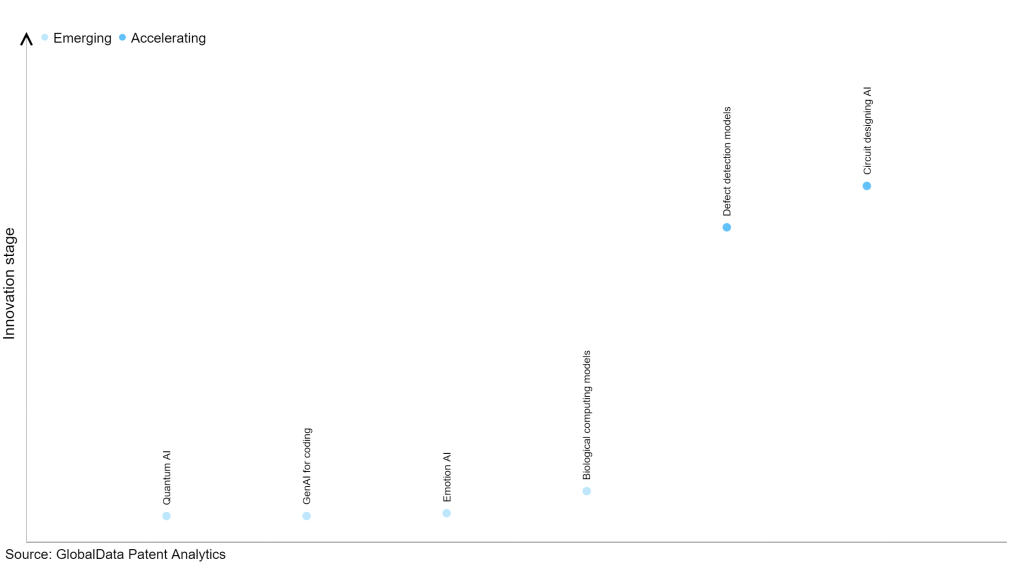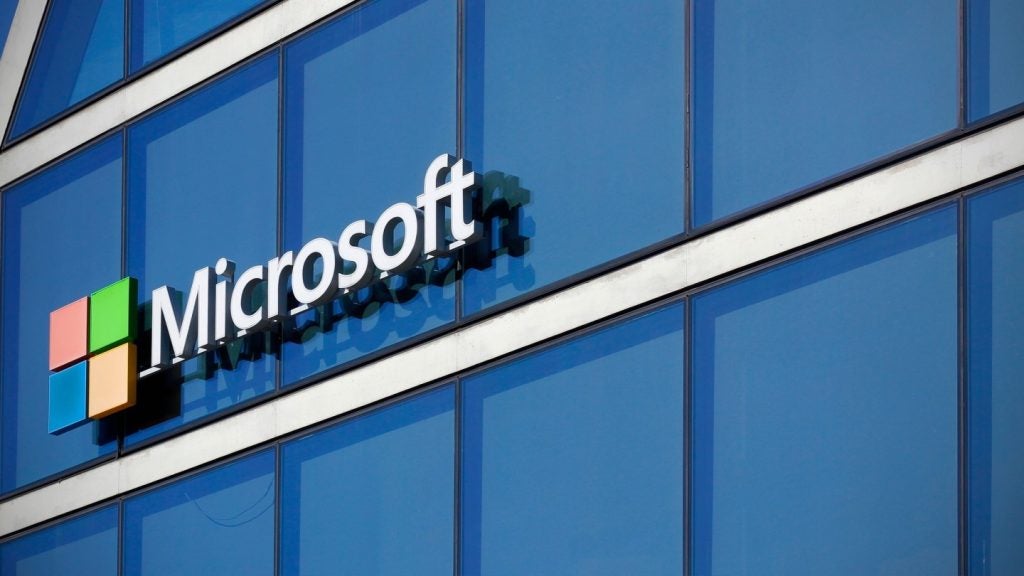The technology industry continues to be a hotbed of patent innovation. Activity is driven by the increasing adoption of digital pathology systems, the abundance of digital image data, and the demand for more precise and standardized diagnoses, and growing importance of technologies such as convolutional neural networks (CNNs), natural language processing (NLP), and image registration techniques. In the last three years alone, there have been over1.5 million patents filed and granted in the technology industry, according to GlobalData’s report on Artificial intelligence in technology: digital pathology AI. Buy the report here.
However, not all innovations are equal and nor do they follow a constant upward trend. Instead, their evolution takes the form of an S-shaped curve that reflects their typical lifecycle from early emergence to accelerating adoption, before finally stabilizing and reaching maturity.
Identifying where a particular innovation is on this journey, especially those that are in the emerging and accelerating stages, is essential for understanding their current level of adoption and the likely future trajectory and impact they will have.
185+ innovations will shape the technology industry
According to GlobalData’s Technology Foresights, which plots the S-curve for the technology industry using innovation intensity models built on over 1.6 million patents, there are 185+ innovation areas that will shape the future of the industry.
Within the emerging innovation stage, quantum AI, GenAI for coding and emotion AI are disruptive technologies that are in the early stages of application and should be tracked closely. Biological computing models, defect detection models, and circuit designing AI are some of the accelerating innovation areas, where adoption has been steadily increasing.
Innovation S-curve for artificial intelligence in the technology industry

Digital pathology AI is a key innovation area in artificial intelligence
Digital Pathology AI utilizes artificial intelligence (AI) methods for examining digital images of human tissue specimens. The technology encompasses algorithms capable of discerning and pinpointing specific cells, recognizing distinct attributes, and offering an assessment of the samples. This approach to discerning and evaluating medical findings holds the potential to expedite and enhance the precision of the diagnostic procedure.
GlobalData’s analysis also uncovers the companies at the forefront of each innovation area and assesses the potential reach and impact of their patenting activity across different applications and geographies. According to GlobalData, there are 325+ companies, spanning technology vendors, established technology companies, and up-and-coming start-ups engaged in the development and application of digital pathology AI.
Key players in digital pathology AI – a disruptive innovation in the technology industry
‘Application diversity’ measures the number of applications identified for each patent. It broadly splits companies into either ‘niche’ or ‘diversified’ innovators.
‘Geographic reach’ refers to the number of countries each patent is registered in. It reflects the breadth of geographic application intended, ranging from ‘global’ to ‘local’.
Patent volumes related to digital pathology AI
Source: GlobalData Patent Analytics
Among the companies innovating in digital pathology AI, F. Hoffmann-La Roche is the leading patents filers. The company’s patents are aimed at developing techniques, systems, and devices for identifying and characterizing heterogeneity in a cell sample. It involves creating multiple fields of view (FOV) for designated areas of interest (AOI) within an image of the cell sample. Hyperspectral or multispectral data from each FOV is structured into an image stack comprising one or more z-layers, where each z-layer contains intensity data for a specific marker at every pixel within the FOV. Subsequently, a cluster analysis is applied to the image stacks. This clustering process groups pixels with comparable ratios of detectable marker intensity along the z-axis layers, ultimately generating numerous clusters with similar expression patterns. The other prominent patent filers in the space include Siemens and Danaher.
In terms of application diversity, F. Hoffmann-La Roche leads the pack, while Fujifilm and Siemens stood in the second and third positions, respectively. By means of geographical reach, AxoGen held the top position, followed by Alentic Microscience and Sumitomo Chemical.
Digital pathology AI greatly enhances diagnostic accuracy by assisting pathologists in analyzing digitized images of tissue samples. This technology can detect subtle patterns and anomalies that may be challenging for the human eye to discern, leading to more precise and reliable diagnoses. Additionally, digital pathology AI improves workflow efficiency by automating routine tasks, allowing pathologists to focus on more complex cases.
To further understand the key themes and technologies disrupting the technology industry, access GlobalData’s latest thematic research report on Artificial Intelligence (AI).
Data Insights
From

The gold standard of business intelligence.
Blending expert knowledge with cutting-edge technology, GlobalData’s unrivalled proprietary data will enable you to decode what’s happening in your market. You can make better informed decisions and gain a future-proof advantage over your competitors.







